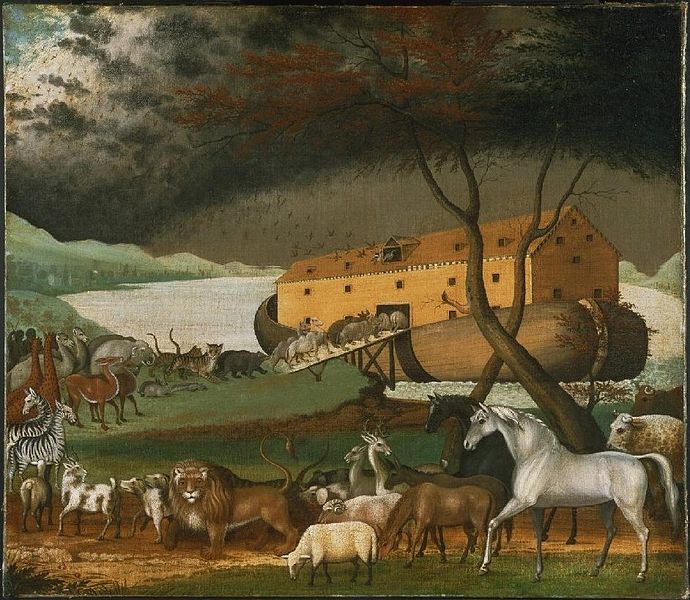A Brief History of the Flood

We live in an obscure part of the universe and, as far as we know, we are alone. Much of what we can observe—galaxies, stars, the colourless gas backdrop of space—formed within the first second of The Big Bang. The first hominidae emerged 7 million years ago. Humans, with fully developed language, sprang up 250,000 years ago. We know all of this with reasonable precision.
If humans are capable of reconstructing the history of the universe down to a rounding error, it stands to reason that we can determine whether there was a flood thousands of years ago, somewhere in the greater Middle East or Southeastern Europe, that inspired the author or authors of Genesis 6-9 in the Bible.
In the story of Noah’s Ark, recently re-imagined by the director Darren Aronofsky as a Hollywood blockbuster, God subsumes the earth in water as divine retribution for the iniquity of Man. But first, He gives Noah a heads up, and so Noah and his family ride out the storm with a boatload of animals and run aground somewhere in the "mountains of Ararat," in what is today's eastern Turkey. God promises to never use the deluge again and allows man to start anew.
Aronofsky has said in the media that his is the least biblical of movies made from Bible stories. That does not mean that miracles do not occur in his version of events. Early in the film Noah (played by Russell Crowe) observes a raindrop land and a small flower immediately bloom. It is, for him, a sign that he and his sons must quickly leave the area.
For all the fanciful elements in the story of the flood, it was long thought, as many Biblical stories were, to be more or less true. Until the nineteenth century, scholars and scientists looked to the natural world for confirmation of the Bible’s historical accuracy. In the case of Noah’s story, many believed that ascertaining the year of the flood would help determine the age of the earth.
Throughout much of Christendom’s history, it was believed that the world was about 6000 years old; the Hebrew Bible places the flood at 1656 Anno Mundi, or years since creation. The British scientist William Thompson, later Lord Kelvin, introduced a longer timeline in 1862, estimating that the universe was at least 20 million years old (he hypothesized that the earth and sun had once been balls of molten matter), making the Biblical account of the flood’s date wildly implausible.
Belief in Noah's flood declined dramatically in the nineteenth century. The eighth edition of the Encyclopedia Britannica, published between 1853 and 1860, observed that it was difficult to believe that all “existing species of animals were provided for in the ark,” and that the flood did not extend beyond what was then the inhabited world.
The next edition, in 1875, made no effort to explain the story in light of contemporary science. The 1960 edition noted that “many ingenious and curious theories were advanced” before modern science and “higher criticism” of the Bible made them seem unlikely.
More recently, however, there has been renewed interest in finding a scientific explanation for Noah’s flood. In the late 1990s, the American scientists William Ryan and Walter Pitman published research suggesting that the flood described in the Bible might have been what is now known as the Black Sea Deluge. The researchers claim that in 5600 BC, the Aegean sea flooded the Bosporus strait, pumping water into the Black Sea basin at two hundred times the rate of Niagara Falls.
Still, a more plausible explanation for the source of Noah’s story may lie far from Anatolia. Apocalyptic flood narratives appear in many world cultures, and the first appear well before the Bible was written, notably among the Sumerians in what is today's Iraq, in seventeenth century BC. Flood narratives appear not only in Mesopotamian culture, but also among the K’iche’ and Maya peoples of Central America and the Lac Courte Oreilles Ojibwa in North America.
Our best bet for learning the truth about Noah and the flood may not lie with archaeologists, then, but with a subtler group of excavators, the artists and anthropologists who rifle through humanity’s collective subconscious. In that sense, Darren Aronofsky may have better luck than Lord Kelvin.





